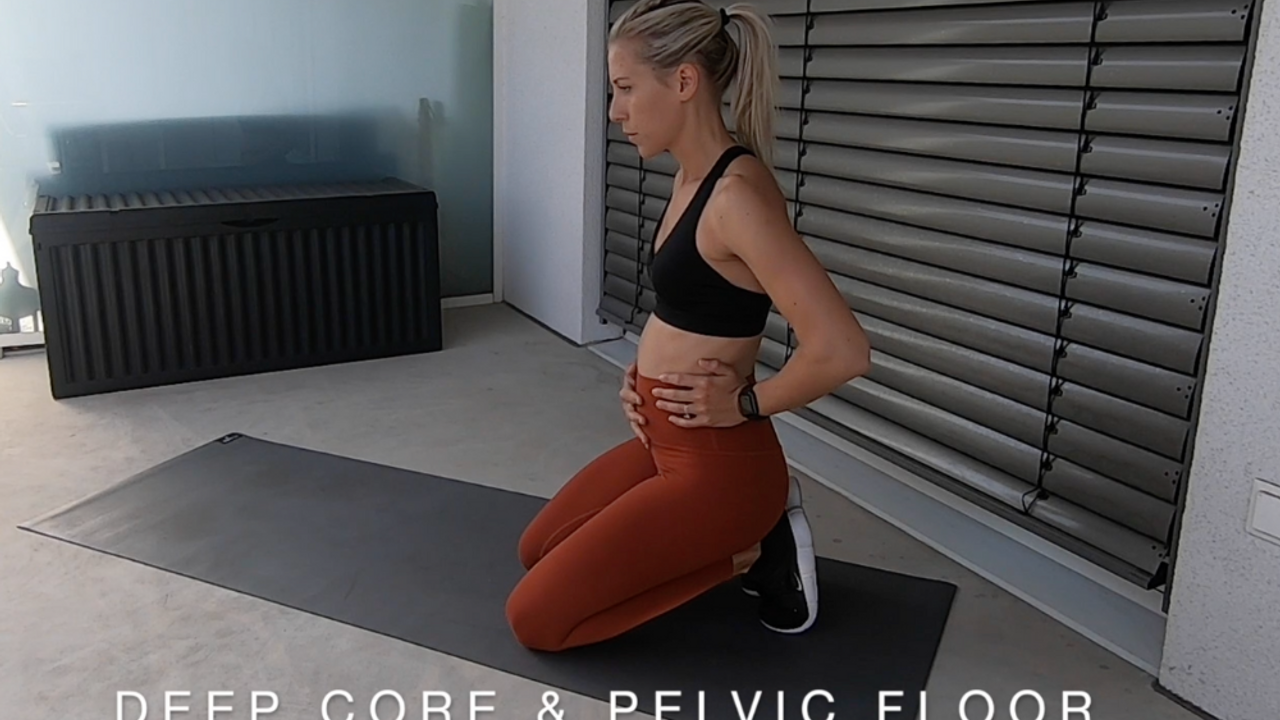The Core Breath – Engaging your TVA & Pelvic Floor

You’ve probably seen some scary posts about Diastasis Recti and Pelvic Floor Dysfunctions associated with pregnancy and postpartum floating around out there on the internet. While these are indeed very scary (and real), there are some techniques you can do to strengthen these muscles so they can function optimally, which can help to minimize these unpleasant, yet common conditions.
Engaging with your core and pelvic floor during pregnancy has been said to benefit in both labor and the healing process postpartum. It’s a good idea to learn how to connect with these muscles during your pregnancy, so you’ll already know how to properly engage with them during your postpartum journey.
After childbirth, your core and pelvic floor have undergone a substantial amount of stress and not to mention transformation! First of all, let me just say that it’s important to remember to give your body some respect and grace. Social media has us believing that you can just “bounce back” after having a baby, and sadly that’s not the case.
So, please don’t expect to see your belly go back to the way it was before your pregnancy, it’s going to take time. Your first few weeks postpartum should be filled with baby cuddles and admiring that precious little life you created (as well as lots of sleepless nights and loads of laundry, but I’m sure you already know that!). And, if you choose, it can also be a time of healing, restoring, and strengthening your core and pelvic floor.
Reengaging with your core and pelvic floor during the first few weeks postpartum will help to restore and strengthen those muscles that are now lax due to pregnancy and childbirth.
The Core Breath is the very first thing you can begin doing after giving birth. It will help to stimulate circulation and nerve growth within your pelvic floor, which can speed up the recovery process!
The key here is a mind-muscle connection, activating your TVA (Transverse Abdominis – your deepest core muscle) and pelvic floor in coordination with your breathing. Once you’ve learned how to successfully perform the Core Breath, you can start adding it to different movements and exercises.
A strong core is important for anyone and everyone, not just pregnant and postpartum women! Your core is part of the framework that helps your muscles to move synergistically with one another. Without a strong core, you can experience symptoms like poor posture, muscle compensation, and back pain.
I’m over 7 months postpartum and I still incorporate the core breath and deep core exercises into my workout regimen often!
Follow the steps below to properly perform the core breath!
Step 1:
Place one hand on your ribs and the other on your lower belly
Step 2:
Slowly inhale to expand, breathing into your hands. Relax your core and pelvic floor, feeling your abdomen expand outward and your pelvic floor expanding towards the floor.
Step 3:
Exhale to engage. Exhale through pierced lips, voluntarily engaging & contracting your core and pelvic floor. Imagine slowly lifting up a blueberry with your “lady parts” and wrapping your core in tight to hug your body. These muscles you’re engaging with are your pelvic floor (lifting of the blueberry), and your TVA (wrapping of the core).
Some things to avoid while performing the Core Breath:
-
Avoid sitting/standing with poor poster – no slouched shoulders or arched backs here! Pretend there is a string attached to the top of your head that runs through your neck and spine. Your head, neck, and spine should be in one straight line together.
-
Avoid breathing in through your chest! Your shoulders and chest shouldn’t be moving, only expanding at your belly and ribs.
*Repeat*
After I gave birth here in Austria, I remember my midwife telling me that the first 8 weeks postpartum is the most crucial time to begin reconnecting and restoring your core. After childbirth, start with the core breath once a day for 3-5 minutes. For a vaginal delivery, you might want to try performing the core breath in a side-lying position for the first week or until you feel comfortable sitting again. For a cesarean delivery, I would recommend waiting a few days post-delivery, and not inhaling to a point that puts stress on your stitches.
Once you’ve mastered the core breath for about a week or more postpartum, you can slowly (very slowly) begin adding movements to your core breath, such as a clamshell or lying knee drop.
The video below demonstrates how The Core Breath is performed, along with a few movements that you can begin incorporating once you have it mastered.



